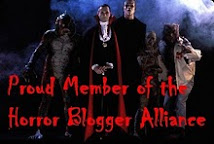The plot follows a veteran detective - Bronson, of course - who teams up with a younger and more "by the book" partner to track a serial killer who loves to get naked, run around the woods, and slice up attractive young women. The killer's identity is no secret to the viewer - he's a sexually frustrated office worker who's played with a sterile smirk by Gene Davis - which allows 10 to Midnight to skip the air of mystery that many crime movies embrace. In its place is a perverse morality tale that makes a deadly game of cat and mouse feel like a popcorn movie.
J. Lee Thompson (who had just made one of my favorite slashers, Happy Birthday to Me) also directed Gregory Peck and Robert Mitchum in the original Cape Fear, and there's a little bit of the same tone here. Bronson's Leo Kessler quickly deduces the killer's identity, but legal loopholes and lack of evidence allow the feud between the two men to get personal, with Kessler's daughter (Beverly Hills Cop co-star Lisa Eilbacher) becoming the killer's next target. Fans of Bronson's work in the late '70s and '80s know what to expect from the star here, and also know that getting this dedicated tough guy on your trail is a recipe for violence and carnage.
Both Bronson and Thompson seem to have been in something of a safe mode at this point in their career. Including this film in 1983, Thompson would direct six Bronson films in six years before retiring in 1989. The star isn't doing anything out of his comfort zone either, playing off the Death Wish formula that defined his late career by once again hitting the city with a gun in his hand and a chip on his shoulder. But 10 to Midnight doesn't subscribe to the formula that you might expect from this duo, mostly due to the supporting cast and their place in the unique script.
Perhaps the most intriguing part of that script is how it seems to shift back and forth from one idea to another. The tone does not change, but the film moves from scenes like "maniac chasing naked woman in woods" to "cops arguing the ethics of the legal system" in a carefree manner. The mixture probably shouldn't work as well as it does, but the actors seem comfortable in their roles and the pacing is top notch. This is one of those movies that feels a lot shorter than it is, because there's always something different and engaging going on on the screen.
Davis' performance as the killer is probably the biggest success in the film, and this killer - whose face we know from the beginning and whose frustrations are spelled out for the viewer - gives the film something that sets it apart from more paint-by-numbers police thrillers. Most comparisons to the slasher genre certainly arise from his eerie, tortured performance in the film and the few wonderful stalking scenes that crescendo to a bloody and violent dorm room finale. The film also does a good job of keeping the killer seeming human, focusing on his frustrations with women and later teaming him with a sleazy lawyer who is wonderfully realized by the great character actor Geoffrey Lewis. This balance between knife wielding stalker and confused and repressed twentysomething is handled in a much better manner than a movie like this often deserves.
And, on the other side of the coin, fans of the star will surely be pleased with the results too. Bronson was still on top of his game when this film was made in 1983, and fans will be treated to a movie that shows off his trademark toughness while never seeming stale. Adding him to the script and pitting him against a unique villain is more than enough to lift 10 to Midnight to surprising heights, pushing the entertainment value of this one-of-a-kind crime drama/slasher movie farther than the parts of the film probably deserve. If you're looking for a pulpy thriller that's never dull, 10 to Midnight will probably entertain you from the opening scene to the final gun.

















1 comment:
I want to bugger Lisa Eilbacher (as the bird was in 1974 when the bird was 18, not as the bird is now obviously).
Post a Comment